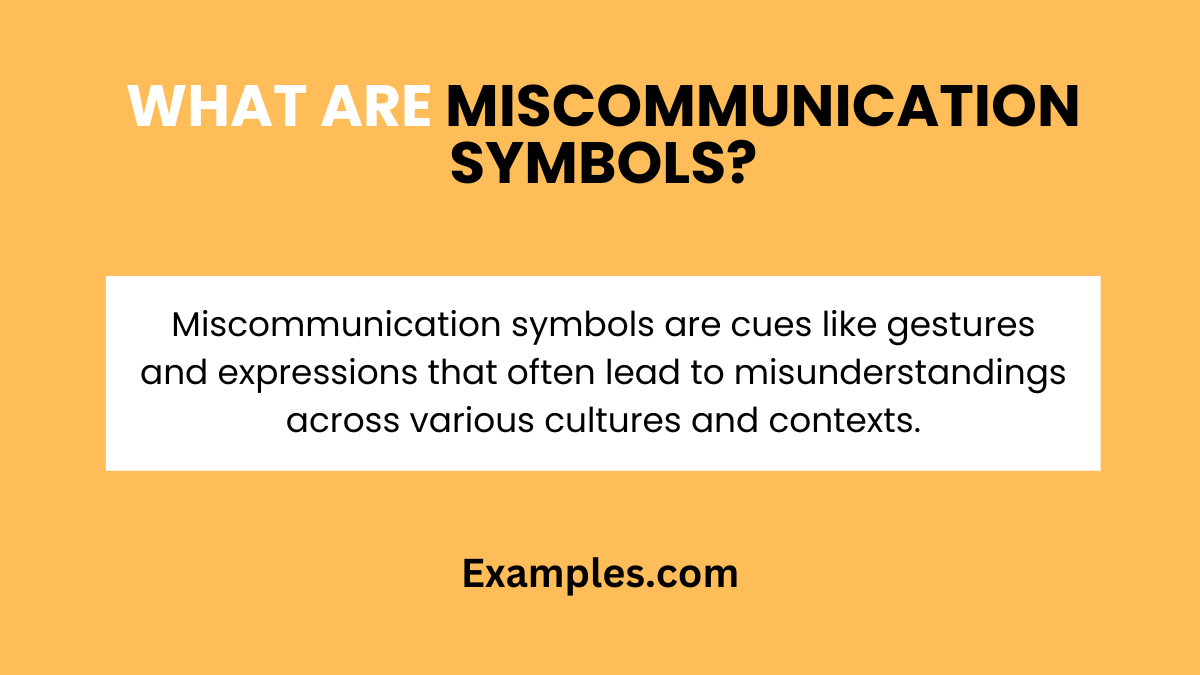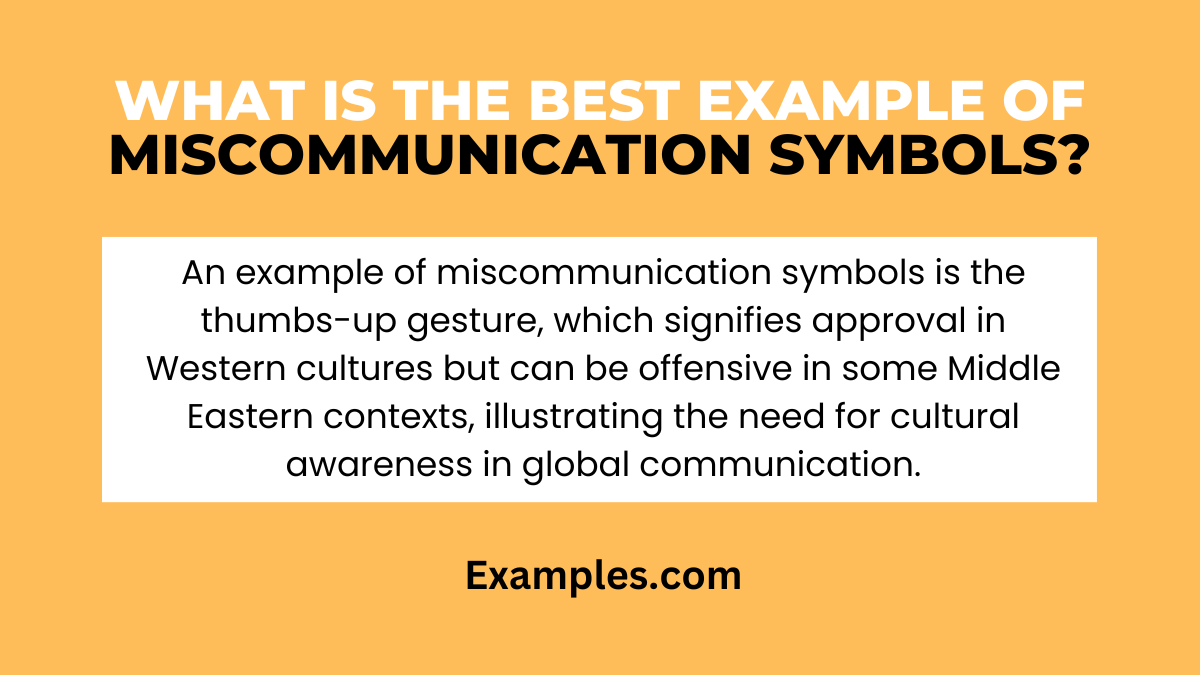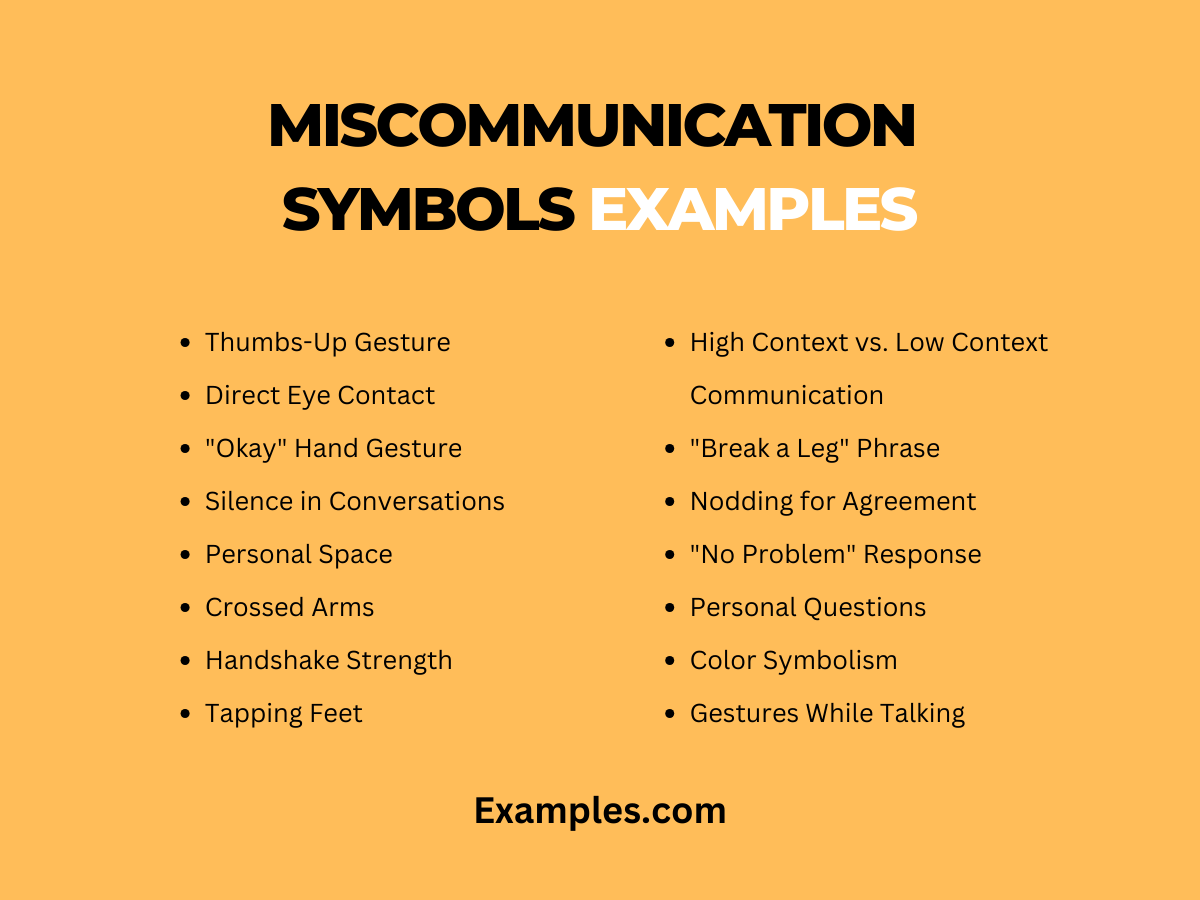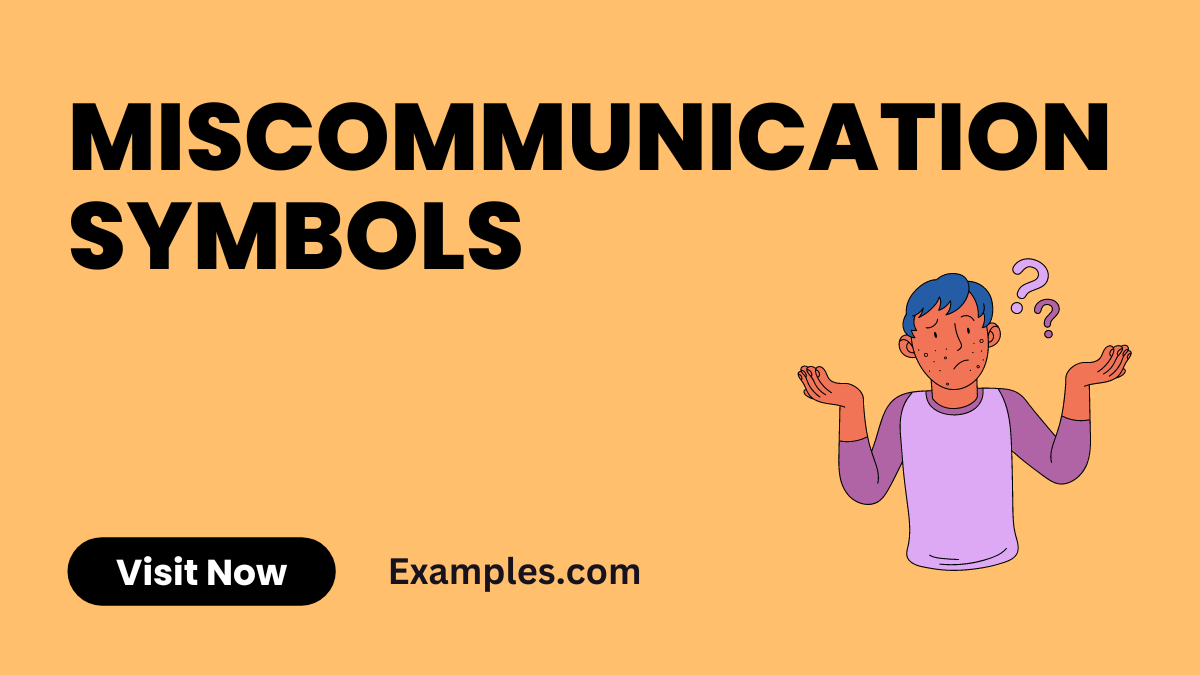14+ Miscommunication Symbol Examples
In the complex landscape of communication, Miscommunication Symbols play a pivotal role in shaping interactions, often leading to misunderstandings. This comprehensive guide explores various symbols and cues that commonly result in miscommunication, particularly in high-stakes situations like crises. From nonverbal cues to cultural symbols, understanding these nuances is crucial for effective communication. We provide real-world examples to illustrate how misinterpretation of these symbols can impact communication, and offer strategies to recognize and address them, enhancing clarity and understanding in both personal and professional contexts.
What are Miscommunication Symbols?

Miscommunication Symbols are cues or signs, often nonverbal, that can lead to misunderstandings in communication. These symbols range from body language and facial expressions to cultural gestures and icons, each carrying specific meanings that can vary across different contexts and cultures. Understanding these symbols is vital in effective communication, as misinterpretation can lead to confusion, conflict, or misaligned expectations. Recognizing and correctly interpreting these symbols helps in bridging communication gaps and fostering clearer, more effective interactions.
What is the Best Example of Miscommunication Symbols?

A classic example of Miscommunication Symbols involves the use of gestures that have different meanings in different cultures. For instance, a thumbs-up sign is generally considered a positive gesture in many Western cultures, indicating approval or success. However, in some Middle Eastern cultures, the same gesture can be perceived as offensive. Such discrepancies highlight the importance of cultural awareness and sensitivity in communication, especially in a global context where interactions cross cultural boundaries. Understanding these nuances is key to avoiding miscommunication and ensuring respectful, effective exchanges.
15 Miscommunication Symbols Examples

Miscommunication Symbols are often subtle yet significant elements in our interactions, leading to misunderstandings if not correctly interpreted. This guide showcases 15 diverse examples of such symbols, covering a range of nonverbal cues, cultural gestures, and communication styles. From body language to colloquial phrases, these examples underscore the importance of context and cultural awareness in effective communication. Recognizing and understanding these symbols can greatly reduce miscommunication, enhancing clarity and mutual understanding in both personal and professional settings.
- Thumbs-Up Gesture
- Seen as positive in many cultures but offensive in others.
- In some Middle Eastern cultures, it’s advisable to use verbal affirmations instead.
- Direct Eye Contact
- Considered confident in some cultures, but confrontational in others.
- In some Asian cultures, it’s respectful to maintain averted eye contact during conversations.
- “Okay” Hand Gesture
- Commonly signifies agreement in the U.S., but can be rude in Brazil.
- In international settings, it’s safer to use verbal affirmations like “That’s fine.”
- Silence in Conversations
- Can signify thoughtfulness or discomfort, depending on the context.
- In Japan, silence often indicates thoughtfulness and should not be rushed.
- Personal Space
- Comfortable distance varies greatly among cultures.
- In Latin cultures, closer proximity is normal, unlike in many Western cultures.
- Crossed Arms
- Might indicate defensiveness or just comfort.
- Instead of assuming, one could ask, “Are you comfortable with our discussion?”
- Handshake Strength
- Perceived differently; a firm handshake is positive in the U.S., not always elsewhere.
- In some Asian cultures, a softer handshake is more appropriate.
- Tapping Feet
- Can indicate impatience or just a habit.
- Avoid jumping to conclusions and instead focus on the verbal conversation.
- High Context vs. Low Context Communication
- High context relies on implicit understanding, low context is direct.
- In high context cultures like Japan, read between the lines rather than expecting direct statements.
- “Break a Leg” Phrase
- Means good luck in some places, could be confusing elsewhere.
- In a professional setting with diverse cultures, it’s better to say, “Good luck.”
- Nodding for Agreement
- Generally indicates agreement, but not in Bulgaria.
- When in Bulgaria, clarify verbally rather than relying on nods.
- “No Problem” Response
- Can signify ease in one culture but insensitivity in another.
- In formal settings, opt for “You’re welcome” to avoid misunderstandings.
- Personal Questions
- Seen as friendly in some cultures, intrusive in others.
- In more reserved cultures, focus on general topics like weather or hobbies.
- Color Symbolism
- Colors hold different meanings; white is for weddings in the U.S., but funerals in China.
- Be mindful of cultural color associations, especially in gifts and attire.
- Gestures While Talking
- Hand gestures enhance communication in some cultures, seen as distracting in others.
- In professional cross-cultural communication, minimize hand gestures to maintain focus on the verbal message.
Miscommunication Symbol Examples for Employees
- Overuse of Technical Jargon
- Can lead to confusion among team members not familiar with the terminology.
- Instead, use clear and simple language: “Let’s use straightforward terms to ensure everyone understands.“
- Vague Email Responses
- Short, non-descriptive emails can be perceived as disinterest or rudeness.
- Be more expressive: “Thanks for the update! I’ll review and get back to you soon.“
- Excessive Use of Capitals in Texts
- Can be interpreted as shouting or aggression.
- Use regular sentence case: “Can you please update the file at your earliest convenience?“
- Not Responding to Messages Promptly
- May be seen as ignoring or overlooking the message.
- Acknowledge receipt: “Received your message, I’ll get back to you by tomorrow.“
- Misinterpreting Silence in Meetings
- Silence might be seen as agreement or disapproval, depending on context.
- Clarify: “I’m processing the information; I’ll share my thoughts shortly.“
Miscommunication Symbol Examples at a Workplace
- Assuming Email Tone
- Misinterpreting the tone of emails can lead to unnecessary tension.
- Seek clarification: “Could we discuss this over a call for better clarity?“
- Cultural Misinterpretation of Gestures
- Gestures can have different meanings in different cultures.
- Be aware and respectful: “I understand our gestures might have different meanings. Let’s clarify to avoid confusion.“
- Overlooking Nonverbal Cues in Virtual Meetings
- Missing nonverbal cues in online settings can lead to miscommunication.
- Encourage sharing: “I notice you have a thought on this; would you like to share?“
- Misreading Work-Life Balance Requests
- Requests for flexible hours might be seen as lack of commitment.
- Communicate openly: “I am committed to my work; I just need a flexible schedule for a personal matter.“
- Generalizing Based on Stereotypes
- Making assumptions about colleagues based on stereotypes can offend and mislead.
- Focus on individual interactions: “I’d like to understand your personal perspective on this.“
Why are Symbols Important in Miscommunication?
Symbols play a pivotal role in the realm of communication. They are the bedrock of conveying and interpreting messages. However, their significance is particularly pronounced in the context of miscommunication. Misinterpretation of symbols can lead to misunderstandings, creating a barrier in effective communication. This is especially crucial in a crisis where clear and concise communication is vital. The importance of symbols in miscommunication stems from their universal presence in languages, gestures, and cultural expressions. They carry specific meanings that can vary dramatically between different cultures or contexts, leading to potential miscommunication.
What are Elements of Miscommunication Symbols?
1. Cultural Variations
Cultural differences greatly influence the interpretation of symbols. A gesture or symbol that is positive in one culture might be offensive in another. This cultural variation is a fundamental element in miscommunication. In a globalized world, understanding these differences is essential to avoid miscommunication, especially during sensitive interactions.
2. Contextual Misunderstanding
The context in which a symbol is used can change its meaning. Misreading the context can lead to miscommunication. For instance, a thumbs-up gesture can signify approval in some cultures, while in others, it might be considered rude. Recognizing the context is key to correctly interpreting symbols.
3. Nonverbal Cues
Nonverbal cues like facial expressions, body language, and gestures are powerful symbols that convey emotions and intentions. Misinterpreting these cues can lead to miscommunication. In a crisis situation, accurately reading nonverbal signals can be as important as understanding spoken words.
4. Language Barriers
Language itself is a complex system of symbols. Differences in language and dialects can lead to miscommunication. Even within the same language, regional variations can change the meaning of words and phrases, creating confusion and misunderstandings.
5. Technological Interpretations
In the digital age, technological platforms often use symbols like emojis or icons. These can be misinterpreted due to generational or cultural differences, leading to miscommunication. In a crisis, relying on clear, unambiguous language is more effective than using potentially confusing symbols.
In conclusion, understanding miscommunication symbols is vital for effective communication, especially in crisis situations. Being aware of cultural differences, context, and personal biases helps prevent misunderstandings. This guide offers valuable insights and tips to navigate the complex landscape of communication symbols, ensuring clarity and understanding in various scenarios. Remember, effective communication is key to resolving conflicts and building stronger connections.



